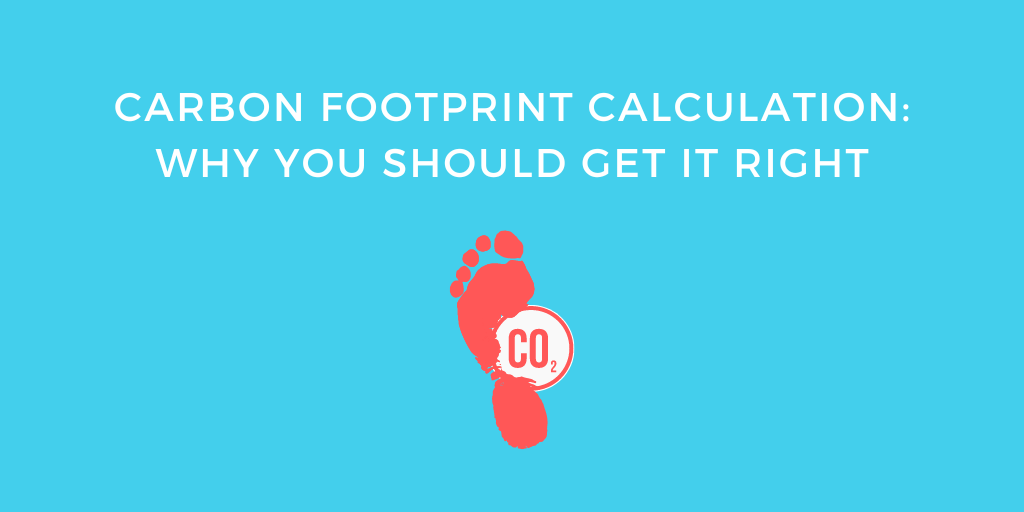Carbon Footprint Calculation: Why You Should Get it Right

Are you an entrepreneur, manager, or investor and have been wondering how to operate more sustainably? One of the targets should be cutting down your carbon footprint, and it should start with determining the current emission levels.
With time, calculating carbon footprint has moved from being a niche concept to an important regulatory requirement. As countries, authorities and stakeholders, such as the UK, the EU, and Hong Kong Stock Exchange (HKEX), set targets to achieve carbon neutral status or reduce greenhouse gasses (GHG) emissions, it is paramount to understand the right carbon footprint calculation. Then, craft strategies for reducing the footprint.
Here is a demonstration of how you should go about carbon footprint calculation.

What is Carbon Footprint?
Before you can set off calculating your carbon footprint, the first thing is determine what it is. This is the total amount of greenhouse gas (GHG) emissions that a person, company, city, country, or product produces. Greenhouse gasses are the emissions released into the atmosphere that causes the greenhouse effect and, ultimately, global warming and climate change.
Human activities have increased global warming in the atmosphere rapidly since the industrial revolution, resulting in the current fast rise in global temperatures. Over the last century, the earth has experienced a rise of temperatures by about 1.1 degrees Celsius. Now, the Paris Climate Agreement has called for the countries to try and limit the global temperature rise to 2 degrees Celsius to reduce the impacts of global warming.
This is the primary reason why you need to cut down your company’s greenhouse gas emissions, but it has to start with carbon footprint calculation.
Carbon Footprint Calculation Strategy for Your Company
Here are the main steps to follow to correctly calculate your company’s carbon footprint:
Define the Boundary for Your Carbon Footprint
This is important because it helps you to set constraints for the assessment period. The main point of calculating carbon footprint is to be able to reduce it, and setting the boundaries will come in handy in achieving the goal. So, the boundaries should include:
- Operational control (elements and areas your company has operational control over).
- Financial control (covers elements that your business manages).
- Equity control (these are all the elements that your firm owns).
Establish the Emissions that Will Be Included
Greenhouse gas (GHG) emissions are categorized into three, scope 1, scope 2, and scope 3. Emissions in scope 1 mainly result from direct operations of the company (areas that you have total control over). For example, on-site machinery that burns fossil fuel might be releasing scope-one GHG emissions. Emissions from vehicles and boilers also fall into this category.
Scope 2 emissions are mainly related to the purchase of energy. This means that you have not produced these emissions, but they are indirectly associated with your operations. Electricity, heat, and steam sourced from other companies fall into this group. Your organization is indirectly responsible for these emissions.
Scope 3 emissions result from indirect actions, such as wastes released from the company operations.
Gather Data and Calculate Your Carbon Footprint
After determining the emissions to include, determine the preferred period of calculation. In most cases, this is one year. Then, gather data from the emission sources accurately for calculation. Most regulations, especially those tied to ESG reporting, require that all data on sustainability should be accurate and verifiable. Some good tips for enhancing data accuracy include:
- Annualizing partial data.
- Using proxies where primary data is missing.
- Intelligent estimation.
Armed with the relevant data, it is time to get the carbon footprint calculation. The best way to get it right is using an appropriate carbon footprint calculator or conversion factors. Make sure to use a calculator from a reputable organization, such as the UN Carbon Footprint Calculator from the United Nations.
One of the most notable things about carbon footprint calculation is that it all requires the correct gathering and analysis of data. If you get it wrong with data collection, there is a risk of your ESG report getting labeled greenwashed. Therefore, make sure to identify the best sustainability management software from Diginex.com and use it in your carbon footprint calculation and ESG reporting.

FAQ
What is carbon footprint calculation?
Carbon footprint calculation is the process of quantifying the total greenhouse gas emissions caused directly and indirectly by an individual, organization, event, or product.
Why is calculating carbon footprint important?
Calculating carbon footprint is crucial for understanding the environmental impact of one’s activities and for identifying ways to reduce carbon emissions, aiding in the fight against climate change.
What factors are considered in carbon footprint calculation?
Key factors include energy consumption, transportation methods, diet preferences, goods and services purchased, and waste production.
How is carbon footprint typically measured?
Carbon footprint is usually measured in units of carbon dioxide equivalents (CO2e), which accounts for the different global warming potentials of various greenhouse gases.
Can individuals calculate their own carbon footprint?
Yes, individuals can use online carbon footprint calculators that estimate emissions based on personal lifestyle choices like travel habits, energy use, and diet.
What role do businesses play in carbon footprint calculation?
Businesses calculate their carbon footprint to assess and manage their environmental impact, often as part of corporate sustainability programs or regulatory compliance.
How can carbon footprint calculations lead to effective climate action?
By identifying the main sources of emissions, individuals and organizations can implement targeted strategies to reduce their carbon footprint, contributing to global climate change mitigation efforts.
Are there tools available for carbon footprint calculation?
Numerous online tools and software are available for carbon footprint calculation, catering to different needs such as individual lifestyle assessment, business operations, and product lifecycle analysis.
How accurate are carbon footprint calculators?
While calculators provide an estimate, their accuracy depends on the quality of input data and the comprehensiveness of the factors they consider. They are useful for getting a general sense of one’s impact.
What actions can be taken after calculating a carbon footprint?
Actions include reducing energy consumption, using public transport or carpooling, adopting a plant-based diet, reducing waste, and investing in renewable energy or carbon offsetting projects.
How often should one calculate their carbon footprint?
Regular calculation, such as annually, is recommended to track changes in lifestyle or business practices and assess the effectiveness of measures taken to reduce emissions.
Can carbon footprint calculations help in setting emission reduction targets?
Yes, understanding one’s current carbon footprint is the first step in setting realistic and achievable emission reduction goals, both at individual and organizational levels.
What is the difference between direct and indirect carbon emissions in footprint calculation?
Direct emissions come from sources directly controlled, like personal vehicles, whereas indirect emissions result from the production of goods or services used, such as electricity consumption.
How do travel habits affect carbon footprint calculations?
Travel habits, especially air travel and car usage, significantly impact carbon footprint due to high fuel consumption and associated greenhouse gas emissions.
Is the carbon footprint of food considered in these calculations?
Yes, the carbon footprint of food is considered, with factors like production methods, transportation, and type of diet (meat-based vs. plant-based) influencing the overall calculation.
How do businesses calculate their product’s carbon footprint?
Businesses calculate a product’s carbon footprint by assessing emissions throughout its lifecycle, including raw material extraction, production, distribution, use, and disposal.
What impact does energy efficiency have on carbon footprint calculation?
Energy efficiency can greatly reduce a carbon footprint, as less energy consumption means fewer emissions, especially if the energy comes from fossil fuel sources.
How can technology help in accurate carbon footprint calculation?
Advanced technologies like AI and big data analytics can enhance the accuracy of carbon footprint calculations by processing large datasets and identifying emission reduction opportunities.
Are there any international standards for carbon footprint calculation?
Yes, there are international standards like the Greenhouse Gas Protocol, which provide guidelines for businesses and organizations to measure and manage their greenhouse gas emissions.
Can carbon footprint calculation influence consumer behavior?
Awareness of the carbon footprint associated with different products and services can guide consumers towards more environmentally friendly choices, driving demand for sustainable options.
Other related articles
Create more and better content
Check out the following resources and Grow!